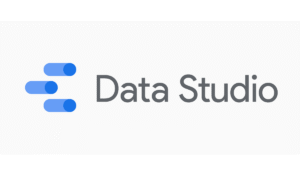In today’s highly competitive digital world, simply producing content isn’t enough. You may be publishing blogs, guides, and landing pages consistently, but are you truly meeting your audience’s needs? Are you addressing the topics where your competitors are gaining traction? If not, it’s time to unlock the true potential of content gap analysis.
At SEO Khana, we believe every piece of content must serve a clear purpose, not just to exist, but to rank well, engage visitors, and drive conversions. This is why content gap analysis is a crucial step in refining your strategy, revealing areas your competitors capitalize on and highlighting what your audience is truly searching for.
In this comprehensive guide, you’ll learn what this analysis entails, why it’s essential for growth, and how to apply it effectively. We’ll also walk you through practical steps and tools like Ahrefs to help you uncover hidden opportunities that can boost your organic reach.
If you’re ready to elevate your content strategy from ordinary to outstanding, this is your starting point.
What Is Content Gap Analysis?
To succeed in digital marketing, it’s essential to not only produce content but to ensure it aligns with what users are actively searching for. This is where identifying missing opportunities becomes crucial. It’s a process that helps uncover topics, questions, and keywords that your target audience is interested in , but that your website hasn’t addressed yet.
Think of it as finding the “gaps” between what your competitors are covering and what you’re missing. These could be specific keywords, subtopics, search intents, or formats that your competitors are using to attract traffic , while your site remains silent on them.
The idea isn’t just to replicate others, but to strategically identify what’s working for them and build better, more useful resources around those areas. By analyzing both your existing content and that of competitors, you can pinpoint high-impact opportunities to grow your visibility, traffic, and engagement.
This type of analysis allows businesses to shift from guessing what to write, to planning content that fills actual market needs, ultimately leading to stronger rankings and more meaningful connections with users.
In short, it’s the bridge between what you’re currently offering and what your audience truly wants.
The Importance of SEO Content Gap Analysis
In the world of digital marketing, visibility is everything. You might have an excellent website with well-written articles, but if you’re not ranking for the right keywords , or missing the topics your competitors are targeting , you’re losing potential traffic, leads, and customers. This is where SEO-focused gap analysis becomes essential.
Unlike general content audits, this process is laser-focused on search engine performance. It reveals the differences between what your website ranks for and what your competitors are successfully targeting. These insights allow you to build a content plan based on real, proven keyword demand , not guesswork.
When implemented effectively, this analysis can uncover:
- High-potential keywords your competitors rank for but you don’t.
- Content themes and questions that align with user intent but haven’t been addressed on your site.
- Search intent gaps, such as missing top-of-funnel or bottom-of-funnel content.
- Opportunities to outperform competitors by creating more comprehensive, targeted content.
Beyond simply identifying missing keywords, this technique helps align your content strategy with the evolving behavior of search engine users. It allows you to prioritize what to write next based on competition, volume, and relevance , ensuring maximum impact for every piece you publish.
In short, SEO content gap analysis is not just a diagnostic tool , it’s a roadmap to smarter, more strategic growth. By filling the gaps, you’re not only improving your search rankings but also strengthening your brand authority and delivering a better experience to your audience.
Content Gap Analysis Benefits
Understanding and applying gap analysis isn’t just about spotting what’s missing , it’s about unlocking growth opportunities that directly impact your SEO performance and business goals. Here are the key benefits you can expect when implementing this strategy:
1. Increased Organic Traffic
By identifying high-value keywords that your competitors rank for , and you don’t , you can create content that attracts more search engine visitors. These are often untapped opportunities that, once addressed, can significantly boost your organic reach.
2. Improved Keyword Targeting
This analysis helps you go beyond obvious or overused terms and focus on relevant, long-tail, or niche keyword mapping your audience is actually searching for. As a result, you’ll develop a more strategic, data-backed content plan that aligns with real user intent.
3. Enhanced Content Relevance
Instead of guessing what your audience wants, you’ll create content based on actual gaps in the market. This leads to articles, guides, and resources that directly answer users’ questions , increasing engagement, dwell time, and trust.
4. Stronger Competitive Positioning
When you consistently fill content gaps, you naturally close the distance between you and your top competitors. Over time, this allows your site to appear alongside , or above , theirs in search results, giving you a serious edge.
5. Optimized Content Funnel
You’ll discover if your site is missing awareness-stage content (like blog posts), consideration-stage guides (comparisons or tutorials), or decision-stage assets (like case studies or product pages). Filling each of these gaps results in a more complete and effective buyer journey.
6. Better ROI From Content Creation
Instead of creating content blindly, your team focuses on what has the highest potential to rank and convert. This ensures your time, effort, and budget are spent on content that delivers measurable results.
As a trusted content creation agency in KSA, SEO Khana leverages advanced techniques like content gap analysis to take your SEO strategy from reactive to proactive. We help you craft smarter, better-targeted content that strengthens your digital presence and drives sustainable growth.
How to Do a Content Gap Analysis (Step-by-Step)
Conducting a thorough analysis to identify missing content opportunities involves a structured approach. Follow these key steps to ensure you uncover valuable gaps and turn them into actionable insights:
1. Identify Your Main Competitors
Start by listing your direct online competitors, those ranking for keywords relevant to your niche. These can be industry leaders or websites targeting your target audience. Tools like Ahrefs, SEMrush, or even Google Search results can help you find top competitors.
2. Gather Competitor Keywords and Content Data
Use SEO tools to collect the keywords your competitors rank for and the content they’ve created around those keywords. This step helps you understand what topics and search terms are driving traffic to their sites.
3. Compile Your Own Keyword and Content List
Next, extract the keywords your website currently ranks for and inventory your existing content. This will be your baseline to compare against competitors and find missing areas.
4. Analyze the Gaps
Compare your keywords and content topics to those of your competitors. Identify:
- Keywords they rank for that you don’t
- Topics or questions they cover but you haven’t addressed
- Content formats or angles missing from your strategy
5. Prioritize Opportunities
Not all gaps are equally valuable. Evaluate which missing topics have high search volume, align with your business goals, and fit your audience’s needs. Prioritize these for content creation or optimization.
6. Develop a Content Plan
Based on the prioritized gaps, create a detailed plan to produce new content or update existing pages. Define the target keywords, format (blog post, video, infographic), and publishing timeline.
7. Implement and Monitor
Publish the new content and track its performance over time using analytics and SEO tools. Adjust your strategy based on results to continuously refine your content offering.
Following this process ensures you not only discover what’s missing but also take concrete steps to improve your content strategy, boost your rankings, and meet your audience’s needs more effectively.
Tools for Content Gap Analysis
Using the right tools is essential to conduct an effective gap analysis and uncover opportunities you might miss otherwise. There are several popular SEO platforms designed to simplify and deepen this process:
1. Ahrefs
Ahrefs is one of the most powerful tools for identifying content gaps. Its Content Gap feature allows you to compare your website against multiple competitors simultaneously, revealing keywords they rank for but you don’t. It also provides valuable metrics like search volume, keyword difficulty, and traffic potential, helping you prioritize your efforts. With Ahrefs, you can quickly uncover hidden opportunities and gain a competitive edge.
2. SEMrush
SEMrush offers a similar gap analysis tool under the “Keyword Gap” and “Topic Research” features. It lets you analyze competitors’ keywords and content ideas, helping you find gaps and new content angles. SEMrush also integrates well with content audit tools, so you can improve your existing pages while targeting missing keywords.
3. Moz Pro
Moz’s Keyword Explorer and Site Crawl tools help identify keyword opportunities and technical issues that might be hindering your site’s performance. While Moz’s content gap features aren’t as advanced as Ahrefs or SEMrush, it’s still a valuable part of many SEO toolkits for overall content and keyword analysis.
4. Google Search Console
Though less feature-rich for competitive analysis, Google Search Console is free and invaluable for understanding which keywords your site currently ranks for and where impressions are low despite some ranking. It can highlight quick wins where content optimization might fill small gaps.
5. Ubersuggest
Ubersuggest, by Neil Patel, is a user-friendly tool for beginners to discover keyword gaps and content ideas. It offers competitor keyword analysis and traffic data, making it a good option for smaller businesses or those new to SEO.
Using a combination of these tools allows you to gather comprehensive insights from different angles , competitor keywords, search volumes, ranking positions, and content ideas , to build a well-rounded content gap analysis.
Pro Tips to Fill Content Gaps Effectively
Identifying content gaps is just the first step. To truly benefit from your analysis, you need a smart approach to filling those gaps and creating content that resonates with your audience and ranks well. Here are some expert tips to help you do just that:
- Understand Searcher Intent
Before creating content, make sure you fully grasp what users want to achieve with their search. Align your content to provide precise answers or solutions, whether it’s informational, transactional, or navigational. - Deliver In-Depth and Valuable Content
Aim to produce content that thoroughly covers the topic. Use examples, case studies, visuals, and expert insights to differentiate your pages from competitors. - Utilize Multiple Content Types
Don’t limit yourself to blog posts. Explore videos, infographics, podcasts, FAQs, and interactive elements to better engage your audience and address different learning styles. - Refresh Existing Content
Sometimes improving and expanding your current pages is enough to close content gaps. Add missing keywords, update facts, and improve readability to boost relevance. - Implement Smart Internal Linking
Connect new and existing content with contextual links. This helps search engines understand your site’s structure and keeps visitors exploring related topics longer. - Track Results and Adjust
Regularly monitor how your new content performs. Use the data to identify successes and areas needing improvement, then adapt your strategy as needed. - Be Patient and Consistent
SEO gains take time. Keep producing quality content consistently and trust the process for sustainable growth and stronger search rankings.
learn more about
- content pruning in seo
- thin content in seo
- how to avoid keyword cannibalization
- content quality control
How SEO Khana Uses Content Gap Analysis to Drive Real SEO Results
In a digital space flooded with content, what truly sets successful brands apart isn’t just what they publish , it’s how strategically they do it. At SEO Khana, we go beyond basic SEO tactics by using content gap analysis to uncover missed opportunities, build smarter strategies, and deliver real search performance improvements.
Our approach doesn’t stop at identifying missing keywords or topics. We focus on Content Creation Optimization , ensuring that every piece of content is not only relevant, but also crafted to align with search intent and user needs. This level of detail helps bridge the gap between what your audience is looking for and what your site delivers.
As content optimization experts, our team uses advanced tools and data to provide tailored content optimization solutions that go far beyond surface-level edits. We apply SEO content optimization techniques that refine your message, structure, and targeting , helping your content rank higher, engage deeper, and convert better.
In this guide, we’ll take you behind the scenes of how SEO Khana applies these strategies , starting with what content gap analysis is, how it works, and why it’s a cornerstone of every winning SEO strategy we build.
Conclusion:
Content gap analysis is a powerful strategy that transforms the way you approach your SEO and content marketing efforts. By identifying what your audience is searching for, but your site currently lacks, you gain a clear roadmap for creating content that drives traffic, engages users, and outperforms competitors.
At SEO Khana, we emphasize the importance of leveraging data-driven insights and the right tools, like Ahrefs, to uncover these opportunities. Filling these gaps not only improves your search engine rankings but also enhances your brand’s authority and relevance in your industry.
Remember, the process doesn’t stop at identifying gaps. Consistent implementation, strategic content creation, and ongoing performance monitoring are key to long-term success.
Frequently Asked Questions (FAQ)
- 1. What is content gap analysis?
Content gap analysis is the process of identifying missing content or topics on your website compared to what users are searching for and what your competitors are already covering. It helps you create content that better meets audience intent.
- What is a content gap analysis in SEO?
In SEO, a content gap analysis involves comparing your keyword and content coverage against competitors to discover new opportunities for ranking and traffic. It shows you which keywords your competitors rank for that you currently don’t.
- How do I perform a content gap analysis?
To learn how to do a content gap analysis, follow these steps:
- Identify your top SEO competitors
- Use tools like Ahrefs or SEMrush
- Analyze keyword overlap and missing keywords
- Create or update content to fill the identified gaps
- 4. What are the benefits of content gap analysis?
The main content gap analysis benefits include:
- Discovering new keyword opportunities
- Creating more relevant content
- Increasing organic traffic
- Outranking competitors in search engines
- How does Ahrefs content gap analysis work?
The ahrefs content gap analysis tool compares your domain against competing domains and shows you which keywords they rank for that you don’t. This helps uncover untapped opportunities and build a stronger content strategy.
- Why is SEO content gap analysis important?
SEO content gap analysis helps you align your content with actual user search intent. It ensures you’re not missing out on key topics that your audience is actively looking for, giving you a competitive edge in search rankings.
- How often should I do a content gap analysis?
It’s recommended to run a content gap analysis SEO at least once every quarter to keep your content strategy aligned with trends, keyword shifts, and competitor performance.







